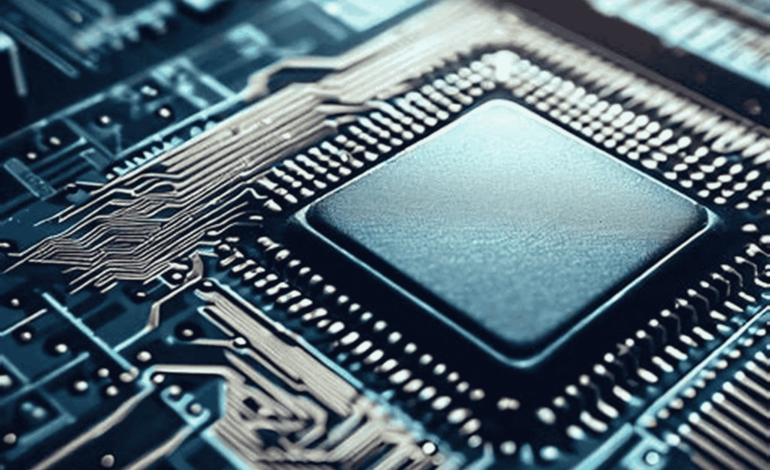
THE CHIP REVOLUTION OF 2025
THE NEW ARCHITECTURE DRIVING SILICON INNOVATION
The year 2025 marks a transformative era in semiconductor design, fueled by architectural innovations that have redefined the limits of chip performance. Unlike traditional monolithic designs, chipmakers now embrace advanced modular systems and 3D stacking technologies, enabling exponential improvements in power efficiency and computational density. Intel’s Meteor Lake and Clearwater Forest chips, for instance, utilize a disaggregated architecture with tiles connected via Foveros packaging—dramatically improving performance while reducing heat output. TSMC continues to dominate manufacturing with its cutting-edge 2nm process nodes, now leveraged by nearly every tech giant for mobile and desktop applications. Meanwhile, AMD’s Zen 5 and Zen 6 chipsets embrace 3D V-Cache for enhanced L3 memory, providing up to 30% performance gains in data-intensive workloads. These advances are not just about gaming or professional workstations—they redefine the very science of silicon, pushing closer to the atomic scale in transistor design and challenging Moore’s Law from entirely new angles.
AI-SPECIFIC CHIPS AND THE NEUROMORPHIC FRONTIER
Artificial intelligence has become a major driving force in chip development, and 2025 sees the rise of processors built specifically for AI tasks. These chips are optimized not just for raw processing power but for parallelism, low latency, and energy efficiency. NVIDIA’s H200 Tensor Core GPU and Grace CPU Superchips represent a landmark in AI computation, designed to process large language models in real-time across edge and data center environments. Qualcomm‘s Hexagon NPU is embedded in smartphones and offers impressive AI performance per watt. But the most exciting frontier is neuromorphic computing—chips designed to mimic the behavior of biological neurons. IBM’s NorthPole architecture is already demonstrating how this technology can deliver smarter decision-making at the edge, while consuming a fraction of the energy required by conventional processors. The goal is not to simply make machines faster, but to make them think more like humans. This paradigm shift opens new doors in robotics, autonomous systems, and medical diagnostics, and is poised to reshape both the software and hardware landscapes.
ENERGY EFFICIENCY, QUANTUM INFLUENCE, AND MATERIAL SCIENCE
The science behind chip design in 2025 goes far beyond transistor counts. Researchers are now exploring exotic materials, including graphene, molybdenum disulfide, and carbon nanotubes, to overcome the limitations of traditional silicon. These materials allow for faster electron mobility and reduced leakage currents, which are critical in today’s dense chip environments. Companies like Samsung and ARM are at the forefront of exploring new substrates and energy-efficient core designs that drastically reduce power draw without compromising performance. Meanwhile, quantum computing—though not yet mainstream—is influencing classical chip designs. The algorithms developed for quantum simulators are being used to enhance AI training methods and optimize transistor layouts. Google Quantum AI and Intel’s quantum division are actively developing hybrid systems where quantum concepts inspire next-gen chip logic. The intersection of chip science and physics is more relevant than ever, turning semiconductors into a bridge between classical engineering and the future of computation.
GLOBAL STRATEGY, SECURITY, AND THE CHIP ECONOMY
As the demand for smarter, faster, and more efficient chips grows, global competition for manufacturing dominance has intensified. The U.S., China, South Korea, and the EU are heavily investing in domestic semiconductor ecosystems to reduce reliance on foreign supply chains and ensure national security. ASML, the only company capable of producing extreme ultraviolet (EUV) lithography machines, remains a critical node in this global puzzle. The geopolitical battle over chip supply and intellectual property has led to strict export controls, strategic partnerships, and multibillion-dollar incentives like the U.S. CHIPS Act. Security, too, has become a cornerstone of chip design. Hardware-level encryption, secure enclaves, and tamper-proof architectures are now embedded in chips by default. Apple’s M4 chip integrates hardware-accelerated machine learning with advanced security layers, making its devices not only fast but resilient against sophisticated attacks. As chips become the brains of every digital device—from cars to kitchen appliances—their strategic value multiplies. Understanding the science and industry behind chips in 2025 is not just about technology; it’s about economics, geopolitics, and the future of connected society.